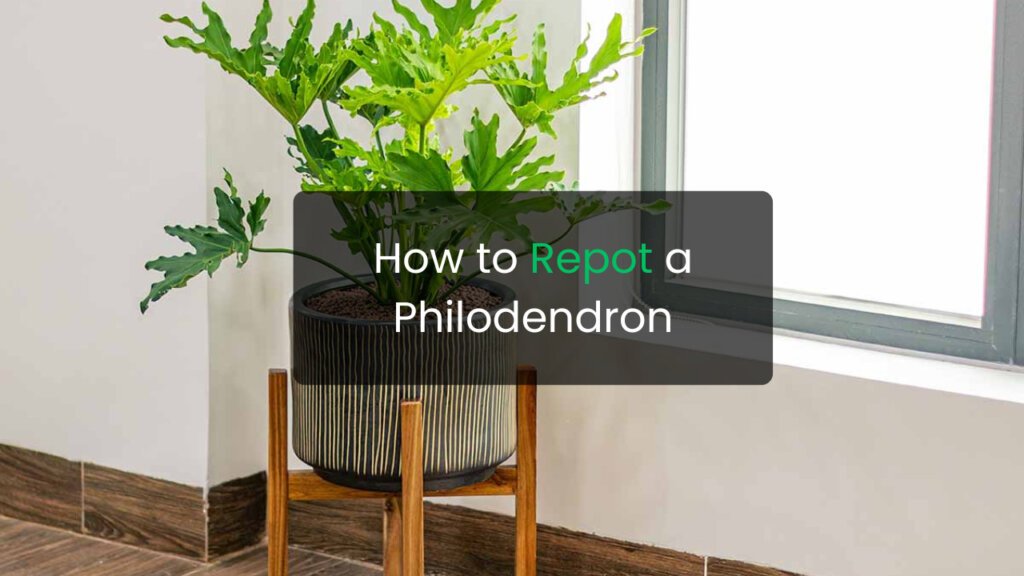Repotting a philodendron is an important part of caring for this popular houseplant. Philodendrons grow fast and their roots eventually get crowded in the pot. When this happens, the plant may stop growing, show yellow leaves, or dry out quickly after watering.
Repotting gives your philodendron fresh potting soil, more space for its roots and better access to nutrients and water. This guide explains when and how to repot a philodendron in a simple and beginner friendly way.
When to Repot a Philodendron
Look for these signs:
- Roots are circling at the bottom or growing out through drainage holes
- Soil dries quickly after watering
- Slowed growth during the growing season
- Pot looks cracked or bent because of root pressure
- The plant feels top heavy or unstable
Most philodendrons need repotting every one to two years during spring or early summer when new growth is active.
What You Need
- A new pot with drainage holes
- Fresh potting mix for indoor plants
- Watering can
- Gardening gloves
- Pruning shears (optional)
Choose a pot that is one to two inches bigger than the current one. Avoid choosing an oversized container because it can cause root rot.
Use a loose and well draining soil mix. A good mix includes peat moss or coco coir, perlite and a little compost. This helps roots breathe, prevents soggy soil and supports healthy growth.
Step by Step Guide to Repotting a Philodendron
1. Water the plant the day before
Moist soil makes it easier to remove the plant without damaging roots.
2. Remove the plant carefully
Turn the pot sideways and gently slide the plant out. Tap the pot if needed.
3. Loosen the roots
Massage the root ball lightly to separate compact roots. Trim damaged or rotting roots if necessary.
4. Fill the new pot
Add a layer of potting mix at the bottom. Place the philodendron in the center.
5. Add soil around the roots
Fill the pot with soil up to the base of the plant, gently pressing to remove air gaps. Do not bury the stem too deep.
6. Water the plant
Water lightly to settle the soil. Drain excess water to avoid soggy conditions.
7. Place in bright indirect light
Keep your philodendron in a warm area with filtered light and avoid direct sunlight until it adjusts.
Aftercare Tips
- Do not fertilize for two to three weeks after repotting
- Keep soil slightly moist but not wet
- Maintain good humidity and airflow
- Watch for signs of shock such as drooping leaves. They recover in a few days
With good care, your philodendron will settle into its new pot and start producing fresh leaves.
FAQs
How often should I repot a philodendron?
Usually every one to two years or when the plant becomes root bound.
Can I use garden soil for repotting?
No. Garden soil is heavy and may hold too much water. Use a well draining indoor potting mix.
Is it normal for leaves to droop after repotting?
Yes. The plant may go into mild transplant shock. Keep it hydrated and in gentle light.
Should I water right after repotting?
Yes. Water lightly to help settle the soil and remove air pockets.
What size pot is best?
Choose a pot one to two inches larger than the current pot to avoid water retention issues.





